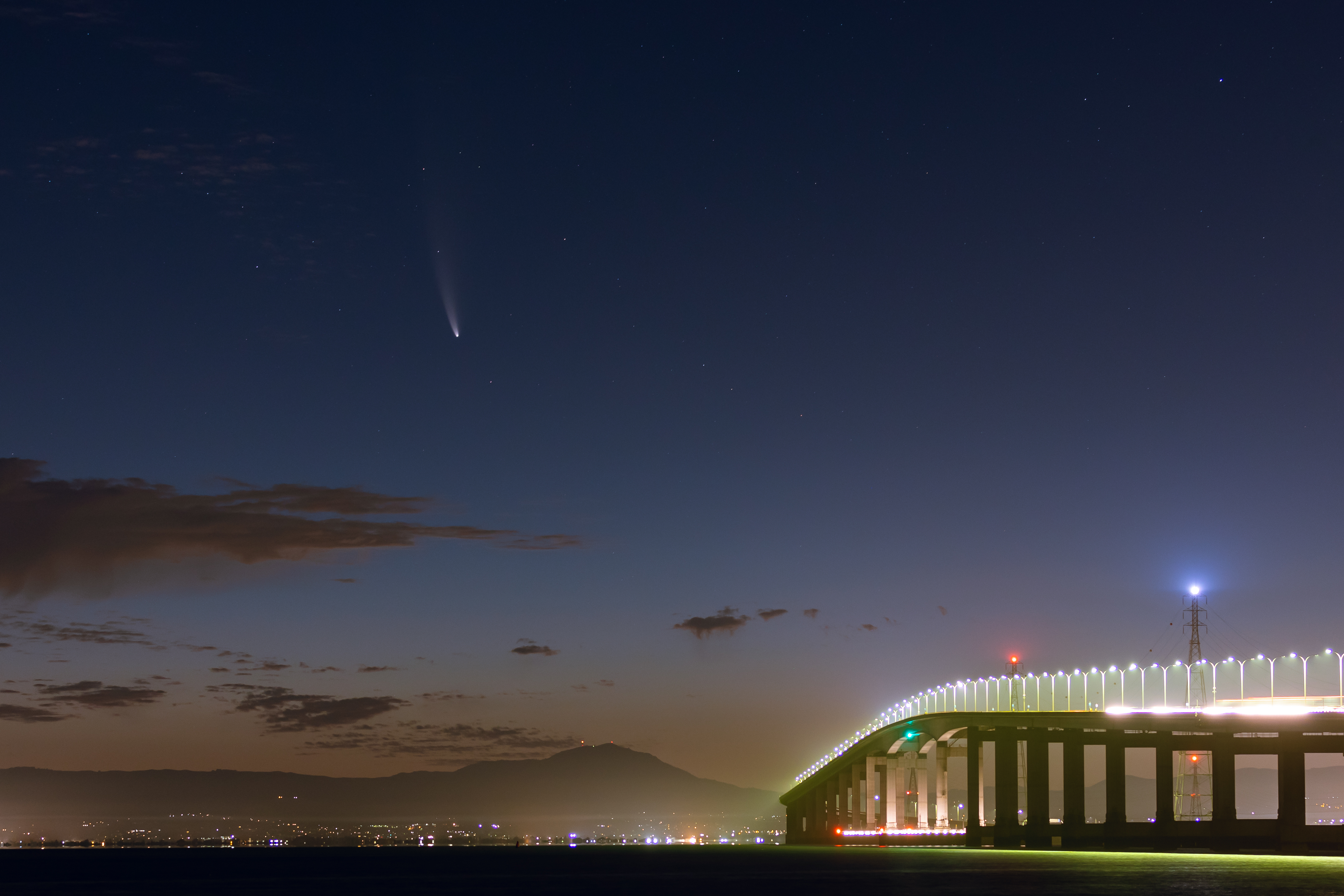Comet C/2020 F3 (NEOWISE)

By Anton Winter

The comet designated C/2020 F3 (NEOWISE) was detected using the NEOWISE space telescope on March 27th, 2020, and made its closest approach (perihelion) around our Sun on July 3rd, 2020.
The orbit of C/2020 F3 around our sun takes about 7500 years, and it soon became apparent that this comet was brightening substantially and would actually survive perihelion around our sun without disintegrating!
I had missed the great comets in the past like Halley’s comet in 1986 so thought I’d wake up early one morning to try and see this comet for myself. And perhaps take a few photos, if I was lucky.
The comet was only about 7 degrees above the horizon by the time I was able to take a look at it, given it had been cloudy in previous days, and it was way too low on the horizon to see it with my telescope. So on the morning of July 11th, 2020, I set off with my trusty Canon 5d Mark IV, and 70-200mm f2.8 IS USM II lens in a hope I might get a photo of it across the San Francisco Bay.
Getting up at 3:30 am, knowing I would possibly be able to see it from 4:00 am, an hour before sunrise, I wandered off to one of the trails bordering the Bay near the San Mateo Bridge. As I was walking down to a spot I had picked out, pondering if it would even be high enough in the sky, I looked up. And I saw it immediately!
There it was, a long (very long) stripe in the sky. It was even more spectacular when looking at it through the binoculars! It had a tail that spanned about 10 degrees in length, and I could make out both of the tails! One tail was an ion tail, and the other the dust trail! I couldn’t believe it; it was awesome!
I spent the next hour alternating between taking photos of the comet with my camera, looking at it through my binoculars, and just standing there soaking up the scene. Before long I had a bunch of photos, and that pesky sun started making things too bright, and I started losing sight of the comet.
Comet C/2020 F3 (NEOWISE) will be visible at Sunset, progressively getting higher in the sky each day, so I’m hoping it will get high enough, and stay bright enough as it exits our solar system to be able to capture it through my imaging telescope. Fingers crossed!